The Royal Botanic Gardens at Kew in West London is one of the world’s most important botanical gardens. The 132-hectare-large (326-acre) domain boasts a collection of about fifty thousand different plant species, as well as many impressive buildings such as the Palm House and the ten-story Pagoda.
History
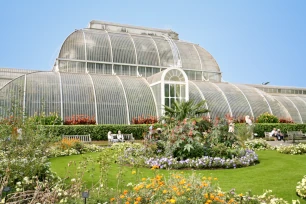
The history of the botanical garden goes back to 1759, when Princess Augusta, mother of King George III, started developing a 3.6 ha large garden at the domain of White Lodge, Richmond in west London with the help of gardener William Aiton and botanist Lord Bute. William Chambers designed several structures for the garden, including the orangery and the pagoda. The botanical garden actually occupied just a small part of the garden, the rest was designed by Lancelot ‘Capability’ Brown.
In 1772 King George III inherited Princess Augusta’s garden after he had already inherited George II’s country house in Kew, a three hectare large estate near the botanical garden. George III decided to join the two royal domains, and he put Joseph Banks in charge of enlarging and planting the combined gardens.
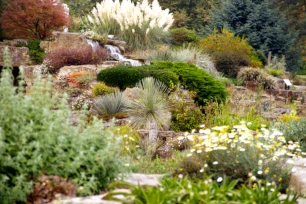
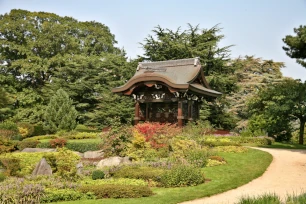
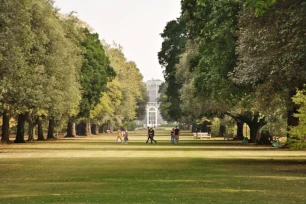
Joseph Banks had just returned from his journey around the world with Captain Cook and had collected a large amount of exotic plants on his trip. During his tenure at Kew, Banks established Kew Garden’s reputation as one of the leading horticultural research centers in the world. The garden would continue to expand over the years.
In 1841 the Kew Gardens were donated to the state. Soon after, several large greenhouses were added, such as the famous Palm House and the Temperate House. The large vistas were also created during this time. In July 2003 Kew Gardens was put on the UNESCO World Heritage list thanks to the historical importance of the garden and its many unique edifices.
The Gardens
The whole domain encompasses an impressive 132 hectares (326 acres), with about 50,000 different species of plants to discover. Some areas are formally laid out with flower beds or themed gardens, such as the large alpine garden. A large part of the domain is laid out in English style. The western part of the domain in particular, with its wide open vistas, invites you to casually stroll through the gardens. If you find the walk too long, you can always take a ride on the Kew Explorer land train, a hop-on, hop-off trolley that tours the gardens.
Several of Kew’s most famous buildings, such as the Pagoda, the Temperate House and the Palm House, are situated on the east side of the domain. The most crowded part is the northeast corner of the park where you find attractions such as the Princess of Wales Conservatory, the Rock Garden, order beds, Waterlily House and the Palm House. But there are interesting sights all over the Kew Gardens, such as the Japanese Gateway, the Waterlily Pond, the Treetop Walkway and Kew Palace.
In all, you’ll need a full day to explore all the interesting attractions at the Kew Gardens.
The Greenhouses
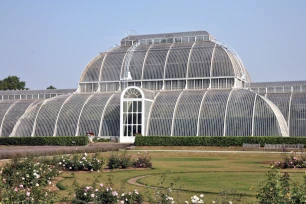
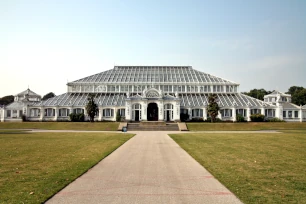
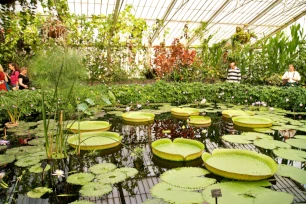
The most famous of the many greenhouses at Kew is the Palm House, built between 1844 and 1848. The magnificent glass and iron structure was designed by Decimus Burton and Richard Turner. The graceful ironwork structure is among the finest buildings of its era. Inside the Palm House you find plants from the Tropical Rainforest. Make sure you walk up the spiral staircase to the footbridge, where temperature and humidity are at its highest.
Richard Burton also designed the Temperate House, Kew’s largest greenhouse. Construction started shortly after the Palm House was completed, but it would take forty years before it finally opened in 1899, when it was the largest greenhouse in the world.
A third large greenhouse in Kew is the Princess of Wales Conservatory, which opened in 1987. This is an expansive building with ten different climatic zones, ranging from a desert climate on one end to a tropical climate at the other end. In this greenhouse, which replaced 26 older ones, you’ll find plants such as cacti, carnivorous plants, ferns and orchids, some of which have ‘air roots’.
A much smaller but no less interesting greenhouse is the Waterlily House, which was built in 1852. The giant water lilies have leaves that can reach a diameter of up to 2.5 meter (8ft). The leaves can support a weight of up to 45 kg.
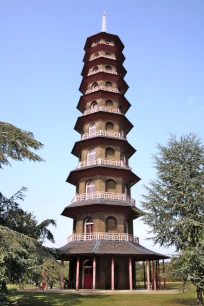
Other Buildings
The most peculiar building at the gardens is the ten-story-tall pagoda. Designed by William Chambers and built between 1761 and 1762, this is the one of the oldest buildings at Kew. The tower is a testimony to the fascination of the British for the Orient during the eighteenth century.
An even older building is the Kew Palace, originally built in 1631 by a London merchant with Flemish roots, which explains the stepped rooftop. In the eighteenth century, the mansion became royal property and was occupied by figures such as King George III.
Another building with royal connections is Queen Charlotte’s Cottage, a small structure built in 1771 as a picnic retreat for Queen Charlotte.
Treetop walkway
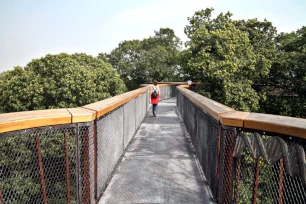
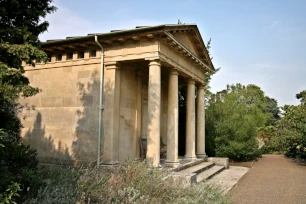
A very popular attraction at the Kew Gardens is the Xstrata Treetop Walkway, a platform eighteen meters (59 ft.) above the ground. The walkway was designed by Marks Barfield Architects, the same people responsible for the London Eye. Opened in May 2002, the two-hundred-meter-long (656 ft.) walkway gives you an opportunity to explore the treetop canopy and experience the trees and surroundings from a completely different perspective.
Another attraction nearby is the Rhizotron which is the opposite of the walkway: it shows the world of trees below the ground as you walk through a ‘crack’ in the ground.
More attractions
There are plenty of other interesting attractions on the grounds of the Kew Gardens, such as an evolution house, a Japanese Gateway and King William’s Temple. There’s even a mock roman arch, known as the ‘ruined arch’ and two small temples. For an overview of all the sights at Kew Gardens, take a look at their excellent site here.

